Nina Dethlefs
SafeLLM: Domain-Specific Safety Monitoring for Large Language Models: A Case Study of Offshore Wind Maintenance
Oct 06, 2024



Abstract:The Offshore Wind (OSW) industry is experiencing significant expansion, resulting in increased Operations \& Maintenance (O\&M) costs. Intelligent alarm systems offer the prospect of swift detection of component failures and process anomalies, enabling timely and precise interventions that could yield reductions in resource expenditure, as well as scheduled and unscheduled downtime. This paper introduces an innovative approach to tackle this challenge by capitalising on Large Language Models (LLMs). We present a specialised conversational agent that incorporates statistical techniques to calculate distances between sentences for the detection and filtering of hallucinations and unsafe output. This potentially enables improved interpretation of alarm sequences and the generation of safer repair action recommendations by the agent. Preliminary findings are presented with the approach applied to ChatGPT-4 generated test sentences. The limitation of using ChatGPT-4 and the potential for enhancement of this agent through re-training with specialised OSW datasets are discussed.
A Deep Learning Framework for Wind Turbine Repair Action Prediction Using Alarm Sequences and Long Short Term Memory Algorithms
Jul 19, 2022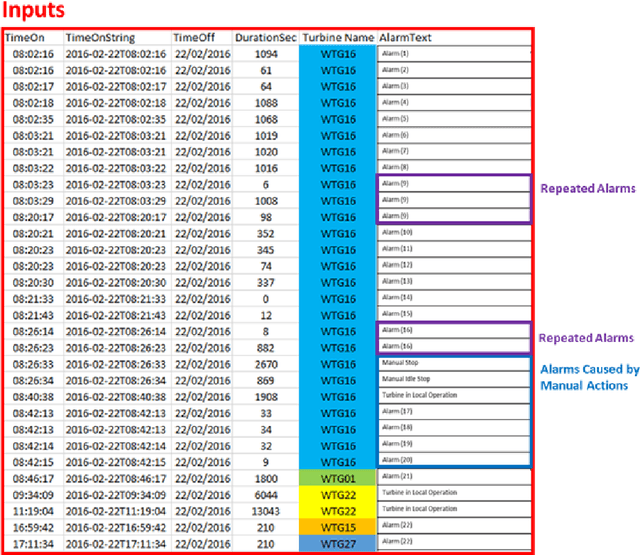

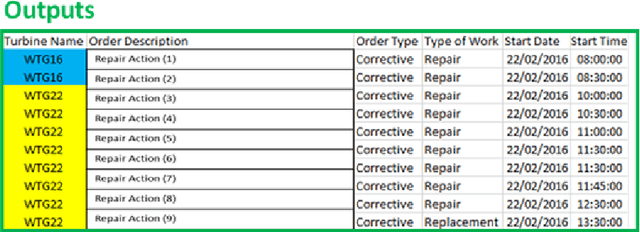

Abstract:With an increasing emphasis on driving down the costs of Operations and Maintenance (O$\&$M) in the Offshore Wind (OSW) sector, comes the requirement to explore new methodology and applications of Deep Learning (DL) to the domain. Condition-based monitoring (CBM) has been at the forefront of recent research developing alarm-based systems and data-driven decision making. This paper provides a brief insight into the research being conducted in this area, with a specific focus on alarm sequence modelling and the associated challenges faced in its implementation. The paper proposes a novel idea to predict a set of relevant repair actions from an input sequence of alarm sequences, comparing Long Short-term Memory (LSTM) and Bidirectional LSTM (biLSTM) models. Achieving training accuracy results of up to 80.23$\%$, and test accuracy results of up to 76.01$\%$ with biLSTM gives a strong indication to the potential benefits of the proposed approach that can be furthered in future research. The paper introduces a framework that integrates the proposed approach into O$\&$M procedures and discusses the potential benefits which include the reduction of a confusing plethora of alarms, as well as unnecessary vessel transfers to the turbines for fault diagnosis and correction.
Scientometric Review of Artificial Intelligence for Operations & Maintenance of Wind Turbines: The Past, Present and Future
Mar 30, 2022


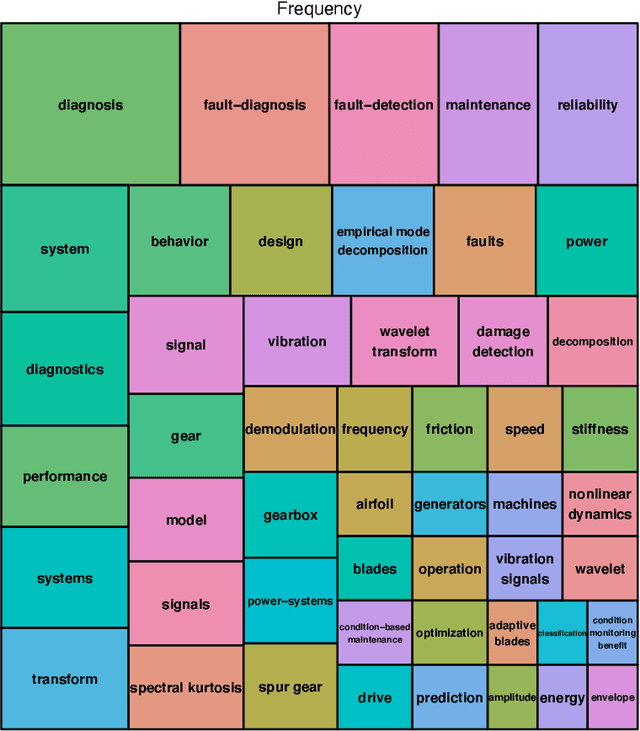
Abstract:Wind energy has emerged as a highly promising source of renewable energy in recent times. However, wind turbines regularly suffer from operational inconsistencies, leading to significant costs and challenges in operations and maintenance (O&M). Condition-based monitoring (CBM) and performance assessment/analysis of turbines are vital aspects for ensuring efficient O&M planning and cost minimisation. Data-driven decision making techniques have witnessed rapid evolution in the wind industry for such O&M tasks during the last decade, from applying signal processing methods in early 2010 to artificial intelligence (AI) techniques, especially deep learning in 2020. In this article, we utilise statistical computing to present a scientometric review of the conceptual and thematic evolution of AI in the wind energy sector, providing evidence-based insights into present strengths and limitations of data-driven decision making in the wind industry. We provide a perspective into the future and on current key challenges in data availability and quality, lack of transparency in black box-natured AI models, and prevailing issues in deploying models for real-time decision support, along with possible strategies to overcome these problems. We hope that a systematic analysis of the past, present and future of CBM and performance assessment can encourage more organisations to adopt data-driven decision making techniques in O&M towards making wind energy sources more reliable, contributing to the global efforts of tackling climate change.
* This is a preprint version of the accepted manuscript in the Renewable and Sustainable Energy Reviews journal, shared under a CC-BY-NC-ND license. The final published version can be found at: https://doi.org/10.1016/j.rser.2021.111051
XAI4Wind: A Multimodal Knowledge Graph Database for Explainable Decision Support in Operations & Maintenance of Wind Turbines
Dec 18, 2020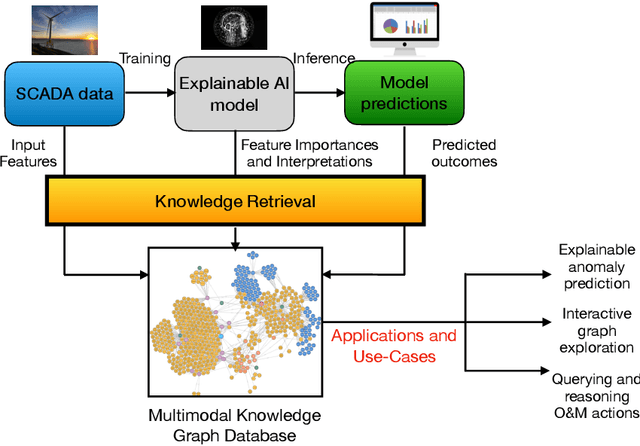

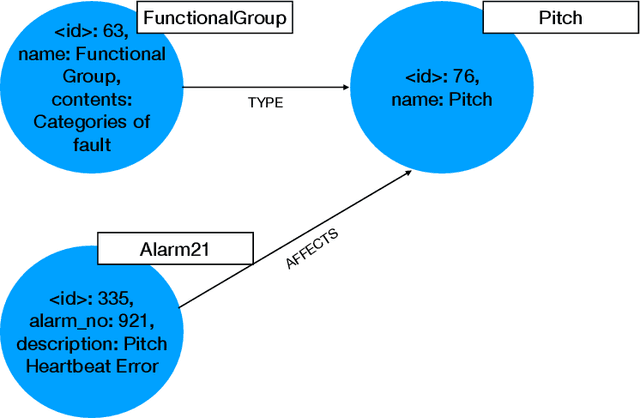

Abstract:Condition-based monitoring (CBM) has been widely utilised in the wind industry for monitoring operational inconsistencies and failures in turbines, with techniques ranging from signal processing and vibration analysis to artificial intelligence (AI) models using Supervisory Control & Acquisition (SCADA) data. However, existing studies do not present a concrete basis to facilitate explainable decision support in operations and maintenance (O&M), particularly for automated decision support through recommendation of appropriate maintenance action reports corresponding to failures predicted by CBM techniques. Knowledge graph databases (KGs) model a collection of domain-specific information and have played an intrinsic role for real-world decision support in domains such as healthcare and finance, but have seen very limited attention in the wind industry. We propose XAI4Wind, a multimodal knowledge graph for explainable decision support in real-world operational turbines and demonstrate through experiments several use-cases of the proposed KG towards O&M planning through interactive query and reasoning and providing novel insights using graph data science algorithms. The proposed KG combines multimodal knowledge like SCADA parameters and alarms with natural language maintenance actions, images etc. By integrating our KG with an Explainable AI model for anomaly prediction, we show that it can provide effective human-intelligible O&M strategies for predicted operational inconsistencies in various turbine sub-components. This can help instil better trust and confidence in conventionally black-box AI models. We make our KG publicly available and envisage that it can serve as the building ground for providing autonomous decision support in the wind industry.
A Deep Learning Approach Towards Prediction of Faults in Wind Turbines
Dec 12, 2019

Abstract:With the rising costs of conventional sources of energy, the world is moving towards sustainable energy sources including wind energy. Wind turbines consist of several electrical and mechanical components and experience an enormous amount of irregular loads, making their operational behaviour at times inconsistent. Operations and Maintenance (O&M) is a key factor in monitoring such inconsistent behaviour of the turbines in order to predict and prevent any incipient faults which may occur in the near future. Machine learning has been applied to the domain of wind energy over the last decade for analysing, diagnosing and predicting wind turbine faults. In particular, we follow the idea of modelling a turbine's performance as a power curve where any power outputs that fall off the curve can be seen as performance errors. Existing work using this idea has used data from a turbine's Supervisory Control & Acquisition (SCADA) system to filter and analyse fault & alarm data using regression techniques. In contrast to previous work, we explore how deep learning can be applied to fault prediction from open access meteorological data only.
 Add to Chrome
Add to Chrome Add to Firefox
Add to Firefox Add to Edge
Add to Edge